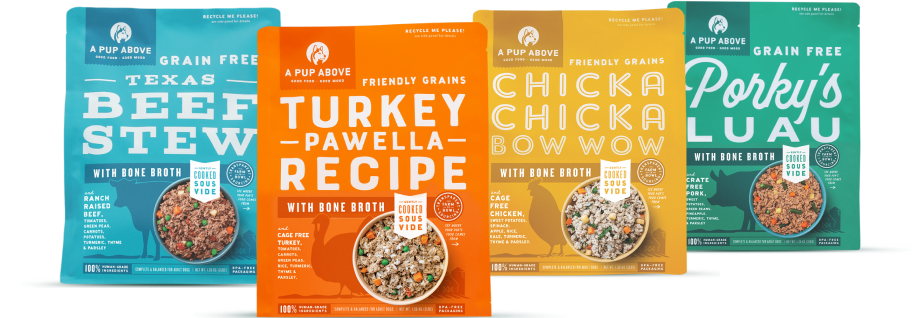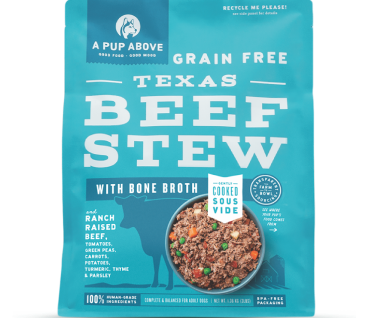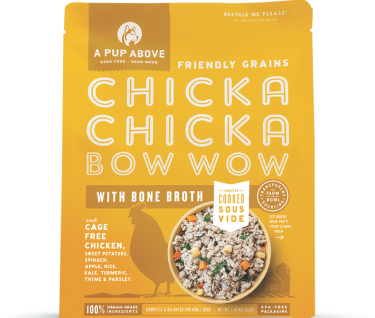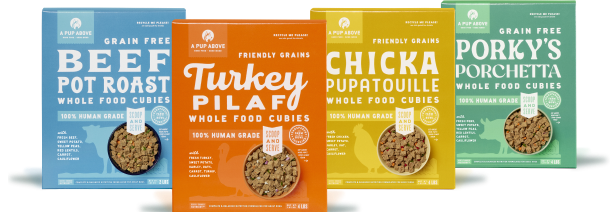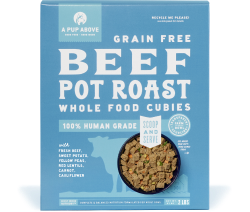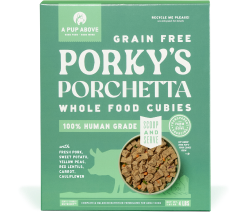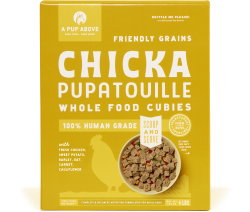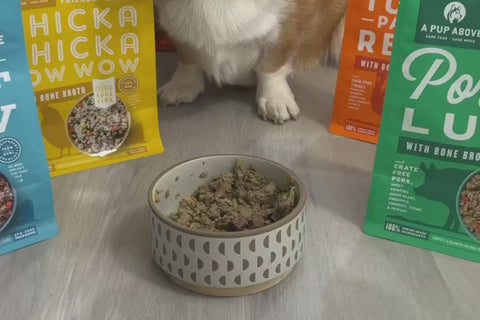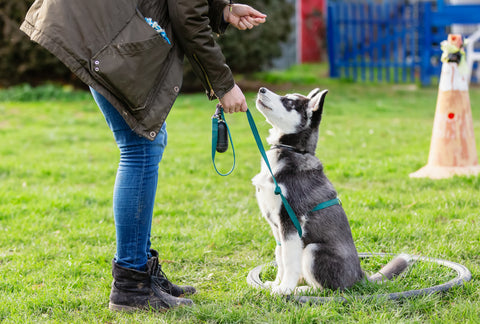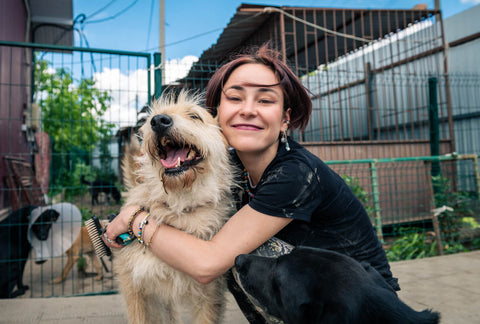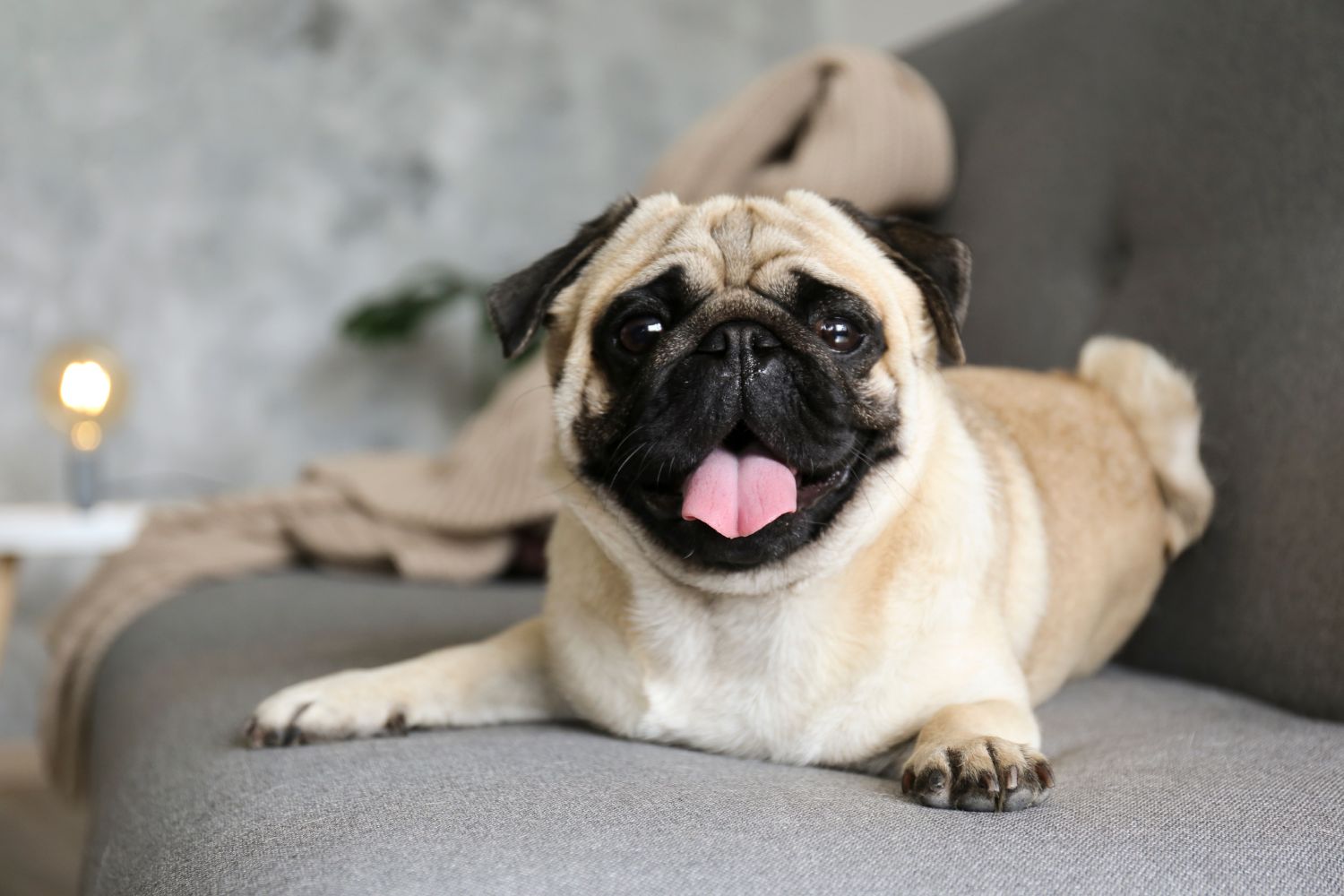
Have you ever fallen for those big, soulful eyes and that adorably squished face of a pug? At A Pup Above, we understand that every dog is special, but there’s something irresistibly charming about pugs that captures hearts everywhere.
As connoisseurs of fine, human-grade meals tailored for our dogs, we know the delightful pug has dietary needs as unique as their personality. Join us as we dive into the world of pugs, exploring everything from their royal lineage to tips for keeping them happy and healthy.
What Are the Origins of the Pug?
Tracing the pug's origins takes us on a journey back to ancient China, where these endearing dogs were first bred as companion dogs for Chinese emperors. Their role wasn't just to provide companionship — they were also cherished as symbols of wealth and guarded their owners with the loyalty typical of the breed.
Living in opulence, pugs were often watched over by soldiers — a testament to their esteemed status within the royal palaces. From China, the breed's popularity spread to the monks of Tibet and then to Japan.
By the 16th century, Europe had fallen under the pug's spell, beginning with their introduction to England and the Netherlands. In England, pugs graced the courts of Queen Victoria, who took a particular liking to the breed, enhancing their status further.
The pug's journey continued as they caught the eye of Josephine Bonaparte, who reportedly used her pug, "Fortune," to carry secret messages to Napoleon while she was imprisoned. The pug's historical significance didn't stop at being mere pets.
Under the House of Orange in the Dutch royal family, a pug named Pompey is credited with saving the life of the Prince of Orange by alerting him to the approach of assassins, securing their place as not only companions but also as guard dogs — a surprising role when considering their friendly nature today.
This illustrious past has cemented the pug's status not just as a beloved toy dog in modern times but as a breed woven intricately into the tapestry of royal history across Europe and beyond. Their story is a rich narrative of companionship, nobility, and undying loyalty that continues to endear them to dog lovers around the world.
What Defines the Appearance and Personality of a Pug?
Pugs are often recognized instantly by their distinctive features: a wrinkled face with a short-muzzled nose and a curled tail that gracefully arches over their compact, sturdy body. Their eyes are large, round, and dark, giving them an expression full of emotion and curiosity. Typically, their coat comes in shades like fawn, apricot, silver, or black, often with a striking black mask that adds to their unique appeal.
Personality-wise, pugs are little clowns of the dog world, known for their sociable and gentle nature. They possess a charming, outgoing disposition that makes them beloved family pets.
Despite their small size, they have a confident attitude and love to show off. Pugs are also known for being particularly attached to their owners, often following them around the house, eager for attention and affection. Their love for human companionship defines them as quintessential lap dogs, always ready for a cuddle.
What Health Issues Are Common in Pugs?
Pugs charm us with their endearing personalities but also face several breed-specific health problems.
Here are the main concerns every pug owner should be aware of:
- Breathing Problems: Being a brachycephalic breed, pugs often struggle with compromised airways, leading to issues like airway syndrome. Monitoring their activity and managing their environment, especially in warm climates, is crucial to prevent overheating and respiratory distress.
- Eye Problems: The large, bulging eyes of pugs make them prone to conditions such as corneal ulcers and dry eyes. Regular check-ups can help catch and manage these issues early.
- Orthopedic Issues: Pugs are susceptible to hip dysplasia and patellar luxation due to their compact and stout build. Keeping them at a healthy weight can reduce the stress on their joints.
- Pug Dog Encephalitis (PDE): This breed-specific inflammatory brain disease is severe and can be fatal. Awareness and early neurological consultation are key for management.
How Should Pugs Be Cared For?
Caring for a pug involves understanding their unique needs and quirks. Here’s a guide to ensure your pup thrives:
Diet and Nutrition
Pugs are not just cute — they can be quite the foodies, too! Opt for high-quality, nutritious meals like our Turkey Pawella, packed with all the goodness to keep your pug’s tail wagging. Remember, the right food not only keeps them healthy but also enhances their coat and energy levels.
Exercise
While pugs aren’t exactly the marathon type, they need regular exercise to keep fit. Short walks in the cooler parts of the day or playful interactions at home can keep them active without overexerting their little bodies.
Grooming
Those adorable skin folds and their curly tail require regular cleaning to avoid infections. A gentle wipe-down with a damp cloth can keep their folds pristine, and regular brushing will manage shedding and keep their coat healthy.
Socialization
Pugs are naturally sociable and enjoy being part of the pack. Early socialization with people and other pups can help them develop a happy and friendly temperament. They're often great with families and adapt well to environments that include children and other dogs.
Health Monitoring
Regular vet check-ups are paramount to managing common pug health issues like eye problems and breathing difficulties. Discuss a health routine with your vet that includes monitoring for signs of distress or discomfort.
Living Environment
Pugs are adaptable to various living situations but do best in moderate climates due to their sensitivity to extreme heat or cold. Ensuring a comfortable living space with ample shade and air conditioning during hot weather can help prevent overheating.
Training
Pugs can be stubborn, but they respond well to positive reinforcement techniques. Short, engaging training sessions will help your pug learn essential commands and tricks, enhancing their mental stimulation and strengthening your bond.
FAQs About Pug Dogs
Do you have questions about pugs? Here are some commonly asked questions that pug enthusiasts often ponder:
What is the lifespan of a pug?
Pugs typically enjoy a lifespan of 12 to 15 years, thriving with proper care and love.
Are pugs good with children?
Absolutely! Pugs are known for their gentle and sociable nature, making them excellent companions for children.
What activities are best suited for pugs?
Pugs love short walks and playful games that don't require heavy exertion — perfect for indoor play and gentle strolls.
How often should pugs be groomed?
Regular grooming is essential, especially to clean their facial wrinkles and manage shedding.
Do pugs require special dietary considerations?
Yes, due to their propensity for obesity, a balanced diet with portion control is essential — something our Chicka Chicka Bow Wow is perfect for, packed with nutrition and tailored to meet a pug's needs without overfeeding.
A Final Word
In the delightful world of pugs, where every wrinkle tells a story and every snort is a note of happiness, we at A Pup Above celebrate the joy these little loves bring into our lives. As you embark on or continue this journey with your pug, remember, it's not just about caring for them but enriching each other's lives.
So, scoop up a bit of joy, maybe with a side of our Texas Beef Stew, and savor the beautiful journey with your pug, ensuring they live their best life — one snuggle at a time.
Sources:
Pug | Description, Weight, Temperament, & Facts | Britannica
Facts About the Pug That You May Not Know | The American Kennel Club
Pug Dog Breed Information | The AKC

